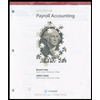ollect the latest annual report of an ASX listed company for the last 2 financial years. Please read the financial statements (balance sheet, income statement, cash flow statement) and notes attached to financial statements on income tax issues very carefully. Please remember some aspects of your firm’s treatment of its tax – can be a very complicated area, particularly for some firms. Based on your understanding of the topic “accounting for income tax” and based on your reading of the collected annual reports, do the following tasks. i Briefly explain the concepts of accounting profit, taxable profit, temporary difference, taxable temporary difference, deductible temporary difference, deferred tax assets and deferred tax liability. ii Briefly explain the recognition criteria of deferred tax assets and deferred tax liability. iii What is your firm’s tax expense in its latest financial statements? iv Is this figure the same as the company tax rate times your firm’s accounting income? Explain why this is, or is not, the case for your firm highlighting the reasons for differences. v Identify the deferred tax assets/liabilities that is reported in the balance sheet articulating the possible reasons why they have been recorded. vi Is there any current tax assets or income tax payable recorded by your company? Why is the income tax payable not the same as income tax expense? vii Is the income tax expense shown in the income statement same as the income tax paid shown in the cash flow statement? If not, why is the difference? viii Briefly explain the concepts of temporary difference and permanent difference. Identify any permanent differences that your company may have. ix What do you find interesting, confusing, surprising or difficult to understand about the treatment of tax in your firm’s financial statements? What new insights, if any, have you gained about how companies account for income tax as a result of examining your firm’s tax expense
ollect the latest annual report of an ASX listed company for the last 2 financial years. Please read the financial statements (
i Briefly explain the concepts of accounting profit, taxable profit, temporary difference, taxable temporary difference, deductible temporary difference,
ii Briefly explain the recognition criteria of deferred tax assets and deferred tax liability.
iii What is your firm’s tax expense in its latest financial statements?
iv Is this figure the same as the company tax rate times your firm’s accounting income? Explain why this is, or is not, the case for your firm highlighting the reasons for differences.
v Identify the deferred tax assets/liabilities that is reported in the balance sheet articulating the possible reasons why they have been recorded.
vi Is there any current tax assets or income tax payable recorded by your company? Why is the income tax payable not the same as income tax expense?
vii Is the income tax expense shown in the income statement same as the income tax paid shown in the cash flow statement? If not, why is the difference?
viii Briefly explain the concepts of temporary difference and permanent difference. Identify any permanent differences that your company may have.
ix What do you find interesting, confusing, surprising or difficult to understand about the treatment of tax in your firm’s financial statements? What new insights, if any, have you gained about how companies account for income tax as a result of examining your firm’s tax expense
Step by step
Solved in 3 steps









